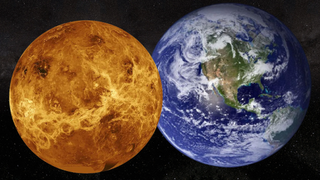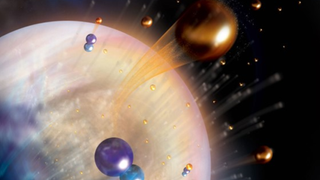
Venus, the second planet from the sun and Earth's scalding neighbor, has long puzzled scientists due to its desiccated state despite once having as much water as Earth. Recent research suggests that hydrogen atoms escaping through a process called dissociative recombination may be responsible for Venus' water loss.
According to multiple sources, including studies published in Nature Astronomy and Space Science Reviews, scientists have long theorized about the cause of Venus' water loss. Previous estimates suggested that hydrodynamic escape of hydrogen was the primary culprit. However, new research indicates that dissociative recombination plays a more significant role.
Dissociative recombination occurs when neutral atoms or molecules in an ionized gas react to form a stable molecule and release an electron. In Venus' case, hydrogen atoms combine with carbon monoxide (HCO+) ions to form water (H2O) and release electrons. These electrons then interact with other HCO+ ions, causing them to lose their hydrogen atoms and escape into space.
The process repeats itself, leading to a continuous loss of hydrogen atoms from Venus' atmosphere. Over time, this results in the planet losing around twice as much water every day compared to previous estimates.
Furthermore, researchers believe that Venus probably had more HCO+ in its atmosphere than previously anticipated to explain its desiccated state. This molecule provides a stepping stone for hydrogen to escape and form water but once all the hydrogen is lost, HCO+ will be gone.
The loss of water from Venus has significant implications for understanding the planet's history and its current conditions. The runaway greenhouse effect on Venus contributes to its extreme temperatures, making it an inhospitable world for life as we know it.








